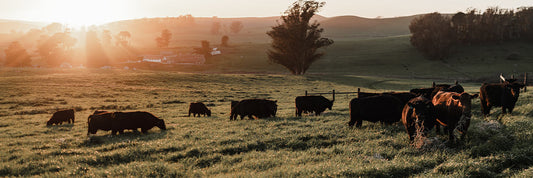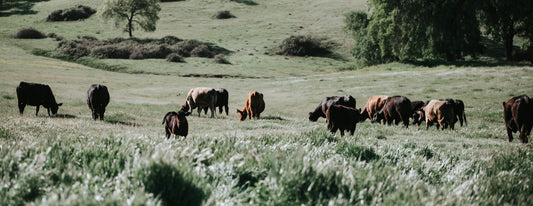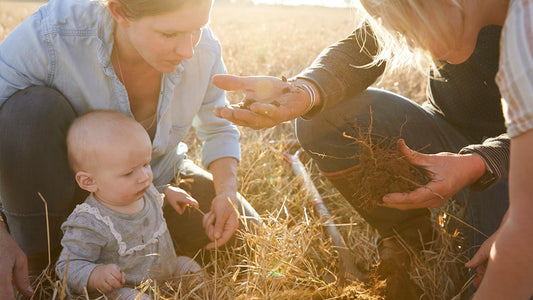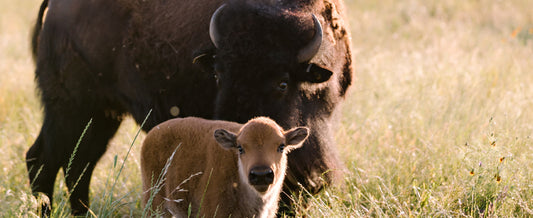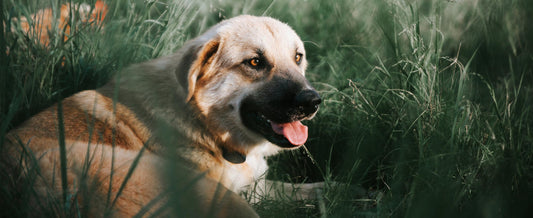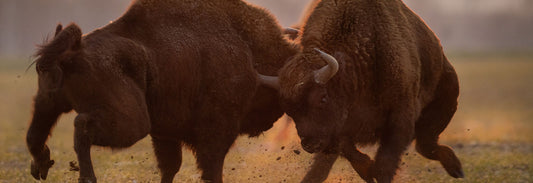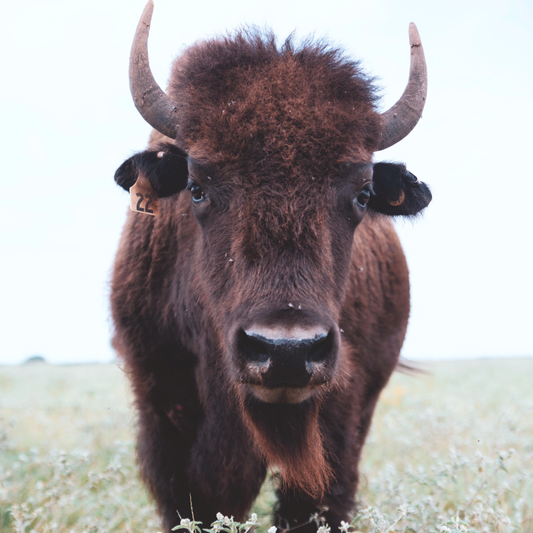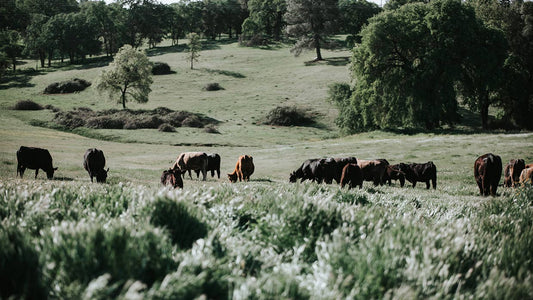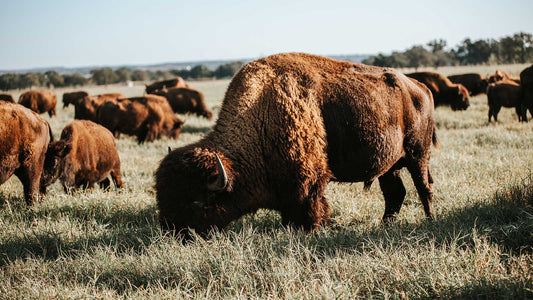WHAT IS REGENERATIVE GRAZING?
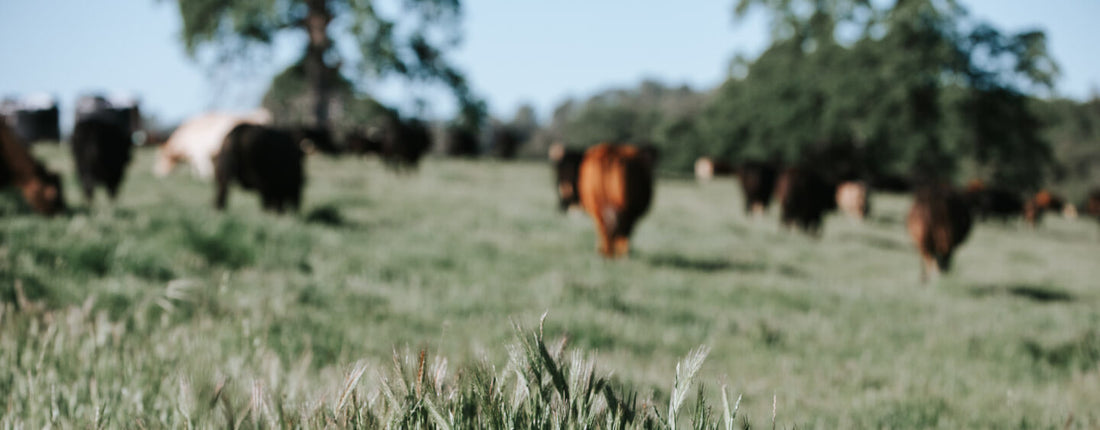

By Chris Kerston - Co-leader of the Land to Market program at Savory Institute
Why Grasslands?
Grasslands are a vital yet often under-represented landscape in our global ecosystem. Although all plants photosynthesize, and in the process sequester carbon out of the atmosphere - the core element of most greenhouse gas compounds - no vegetation type beats grasses. Grasslands cover a greater area of the earth’s landmass than any other. And if that wasn’t enough, unlike forests, grasslands store most of the carbon they sequester from the atmosphere deep under the soil surface as organic matter, which actually increases fertility and enhances soil life in countless ways. That is why the great food growing regions of the world are former grasslands, not forests.
Grasslands are the most important ecosystem for human civilization. With one-third of the Earth’s land -- or roughly 5 billion hectares -- made of these vast open spaces, and experts estimating up to 70% turning to desert through a process known as desertification, now more than ever it is critical to support grassland regeneration for climate, food, and water security. From food and fiber production to soil carbon and wildlife habitat, grasslands provide a host of ecosystem services necessary for all life on this planet.
About Holistic Management
Surprisingly though, grasses need to be grazed to thrive. At first it may sound counter-intuitive, but in areas of the world that receive intermittent rainfall and humidity, nature employs grazers to assist in biological decay. Grazers carry healthy colonies of microbes in their rumen. These microbes have a symbiotic relationship with their herbivorous hosts in that they are able to digest the grass for the animals in exchange for a warm, moist, dark place to thrive, kind of like a microbial womb.

In the past, large wild herds of herbivores such as caribou, buffalo, or wildebeest occupied the grasslands - grazing, defecating, stomping and salivating as they moved across them. Over time, most wild herds disappeared and were replaced by humans and their small numbers of sedentary livestock. Without the timely stomping and excrement of large numbers of animals, and the subsequent period of recovery when animals moved on, the cycle of biological decay in these grasslands was interrupted and the once-rich soils and thriving prairies began to degrade. Many of the grass plants were left completely ungrazed. Their dried-off leaves blocked sunlight from reaching the growth buds at their bases and they started to die. Much of the soil surface was left unbroken and unfertilized, making it difficult for new grass seedlings to establish.
However, we all have been taught that grazing animals, particularly domestic livestock, can do great damage to landscapes. We’ve seen it from our cars as we zoom down the highway and watch the denuded countryside humming by. The difference is that domestic livestock are usually scattered, rather than bunched in herds, and remain in one place. At times they are rotated among pastures, but their rotations move too quickly or too slowly to match the needs of the plants, soils, and other life forms. Worse yet, Confined Animal Feeding Operations (CAFOs) move all the animals to one place, transport feed to them and haul away their waste. These industrial animal factories are prone to disease and are a source of air and water pollution that adversely affects the communities neighboring them.
Grasslands need to be properly grazed and grazing animals need to be on the grasslands. To mimic nature, the animals need to be bunched and moving to provide the plants enough time to fully recover between grazing. Nature does this by using predator pressure to keep the grazing animals constantly traveling and impacting new areas of land. Domestic livestock need humans with smart and comprehensive, holistic plans and great execution.

So Holistic Planned Grazing is much more than rotational grazing and grass-finishing livestock. It means land managers are planning for a whole lot of considerations, including the desired outcomes for their land, livestock, wildlife, and business, as well as their family’s quality of life. They plan the movement of the livestock as much as a year in advance, and re-plan ongoingly as they test their progress toward the achievement of those desired outcomes - day in and day out.
Allan Savory initially developed Holistic Management to halt the spread of desertification and the human impoverishment that always resulted. Livestock had long been blamed for creating deserts, but Savory realized it was how those livestock were managed that was the problem, and it was the management that had to change.

Savory developed a proactive triple-bottom-line planning method for livestock grazing, known as Holistic Planned Grazing (HPG). It enabled pastoralists to simulate the effects wild herds once produced on the land. HPG charts grazing moves and considers the time that a plant is exposed to a grazing animal so as to plan for adequate plant recovery.
Global Network
A key component to Savory’s impact lies in its ability to scale Holistic Management and regenerative grazing practices across the globe. Through the Savory Global Network, a thriving community of people are working to advocate, train, implement and facilitate Holistic Management and regenerative agriculture practices in their own contexts to create enduring returns for the land and all who depend upon it. This combined effort exerts a tremendous force for change on a massive scale.

Currently the network is made up of 49 locally-led-and-managed offices around the globe. The network has trained 12,645 land managers and impacted 32+ million acres since 2009.

OTHER RESOURCES:
Why animals should be part of our food system
Properly managed livestock regenerate soil and grasslands - with Joel Salatin
How Holistic Planned Grazing Works in 60 Seconds
Rotational Grazing is NOT Holistic Management
BIOGRAPHY:

Chris Kerston has dedicated his life to helping connect innovative ranchers and farmers with progressive brands in ways that create true synergistic value for both sides. Chris managed ranches and farms full-time for nearly 15 years before joining the Savory Institute. In that time, he developed thriving and profitable markets for a number of different niche products. He has been a practitioner and advocate for regenerative agriculture for his whole career. He has a strong desire to contribute to better systems that meet the consumer’s wants and needs. Chris also utilizes innovative media production in concert with traditional marketing techniques to help ranchers share their stories and build long lasting relationships with partners based upon common goals. He now co-leads Savory Institute’s Land to Market program – the world’s first verified regenerative sourcing solution.
https://www.linkedin.com/in/chris-kerston/





